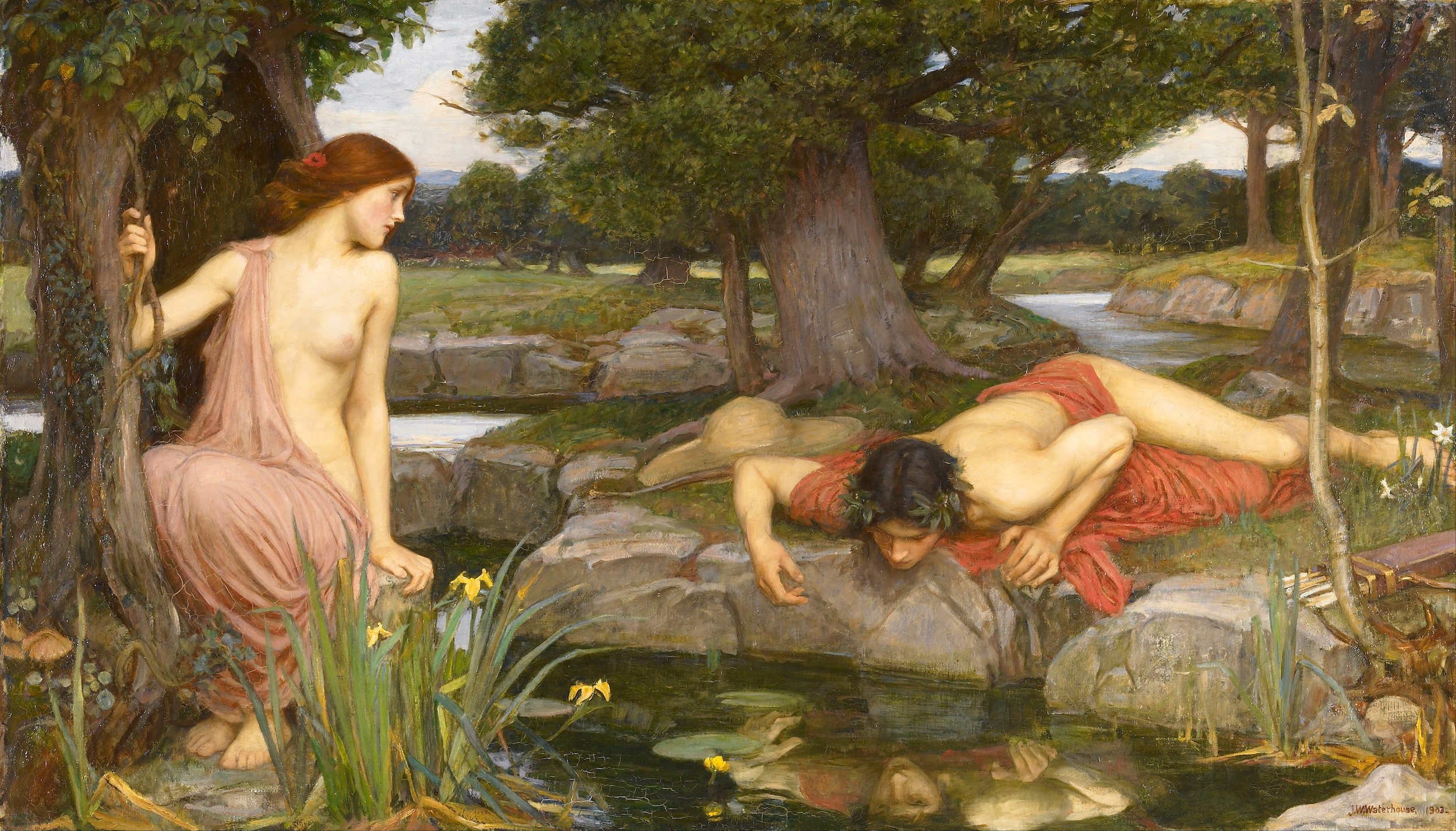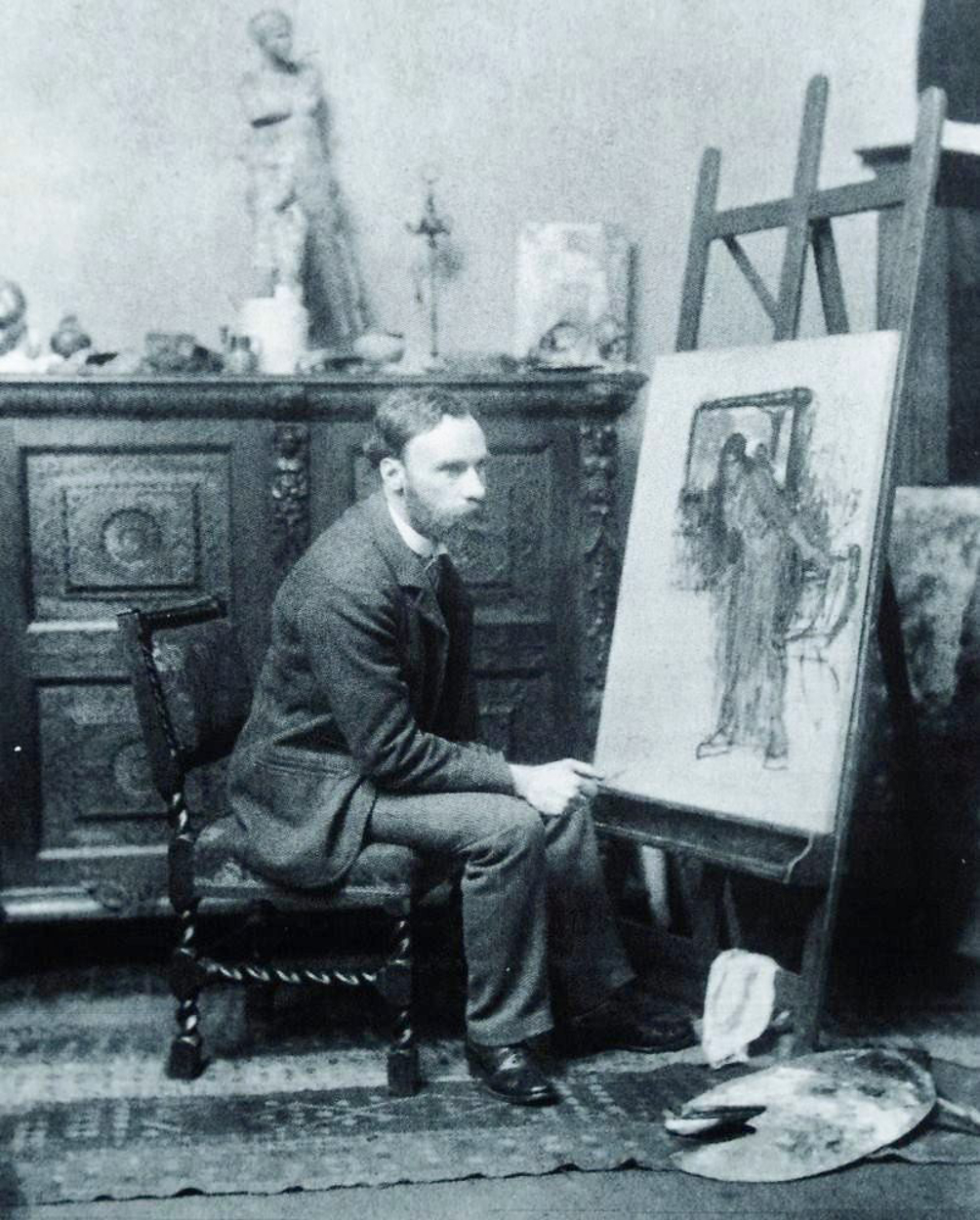Punished by a goddess for her constant chatter, Echo was confined to repeating the words of others. Enamoured with Narcissus, the son of the river god Cephisus and the nymph Liriope, she tried to win his love using fragments of his own speech but he spurned her attentions. Men and women alike were enamored with Narcissus’ beauty, but he returned none of their affections.
The goddess of Vengeance named Nemesis noticed his behavior and one day attracted Narcissus to a river, where he fell in love with his own reflection. And here we have this scene—Echo watches Narcissus looking at his reflection, unable to tear himself from the fleeting beauty of his own face. Soon this inability to touch, to connect, to feel the love of the immaterial object of his affection, leads Narcissus to madness. Echo, unable to utter words of her own, retraced Narcissus’ last words with her own voice. In his madness Narcissus pounded his chest until he died. As a pyre is prepared Narcissus’ body disappears. In its place a beautiful flower appears— a Narcissus.
This famous story was told in Ovid's Metamorphoses.
A contemporary of Claude Monet and Van Gogh, Waterhouse did not seek alternate means of expression, and instead adhered to strict classical themes and techniques. When Monet was examining space and color, and creating his first all-over compositions of water lilies in Giverny, Waterhouse used the medium simply to retell well-loved stories.
Help us and donate so we will be able to release the new version of DailyArt this autumn: http://support.getdailyart.com


 John William Waterhouse
John William Waterhouse